Ever felt like an overburdened pack mule on your backpacking ventures? I get it completely, as my earliest hiking endeavors were also overshadowed by the weight of the hefty gear. But then, a mix of painstaking research and relentless trial-and-error led me to some nifty lightweight backpacking strategies.
These transformed my taxing struggles into invigorating adventures. So, how about we dive right in and revitalize our mental packs with these three invaluable tips to help you morph into a clever ultralight trekker — sound good?.
Key Takeaways
- Ultralight backpacking is about carrying the lightest and simplest gear, making your hike easier and more enjoyable.
- Before going ultralight, carefully consider your key gear components like your backpack, shelter, sleeping bag, and provisions.
- To reduce backpack weight, pack items efficiently, make alterations to items for lighter options, choose multi-purpose gear, cut non-essential items and limit spares.
What is Ultralight Backpacking?
Ultralight backpacking is all about carrying less to do more. It’s a type of hiking where you carry the lightest and simplest gear. You take with you only what you need so that your backpack is as lightweight as possible.
Everything has its use and there are no extra items. The focus here is on efficiency.
The goal of ultralight backpacking is to make your hike easier and fun by reducing weight from your pack. Your big four items, such as your sleeping bag, shelter, sleeping pad, and backpack must be light too! This makes it simple to move fast and cover long distances without being tired quickly.
So if you love hiking but hate heavy packs pulling you down, this can help a lot!
Considerations Before Going Ultralight
Before embarking on an ultralight backpacking adventure, it’s crucial to carefully consider the key components of your gear setup: backpack, shelter, sleeping bag, and provisions such as food, fuel, and water.
Backpack
Going light is vital for a fun hike. A lightweight backpack makes this easy. Aim for a base weight between 10 and 20 lbs. Make sure to pick gear that cuts down on weight but still fits well and feels comfy.
Your backpack’s shape matters too. This is called ergonomics. It means how the pack fits your body so you can move with ease. Try different ones out to find what works best for you.
Getting down to those low pounds can be hard! Don’t stress if it takes time, just keep trying different things and learning more about what works best for you.
Shelter
I always go for a compact and lightweight shelter on my hikes. A backpacking tarp and bivy does the job well. It protects me from bugs, wet ground, and wind gusts. Plus, it’s speedy to set up or pack away.
Going minimalist with an ultralight tent also helps lessen my load while hiking- a smart strategy indeed. These versatile shelters are practical and durable too- making sure I stay safe in different weather events as weight flies off from my backpack! Such shelters make me efficient on the trail without adding stress to it!
Sleeping bag
Choosing the right sleeping bag for lightweight backpacking is crucial. Consider factors like weight, insulation quality, and the bag’s cut. Look for a bag with a suitable temperature rating to keep you warm during your hikes.
Some ultralight backpackers prefer using quilts instead of sleeping bags because they tend to be lighter. When comparing weights, make sure to compare bags with the same temperature rating for a fair comparison.
Keep in mind that waterproof-breathable shell fabrics may not breathe well, leading to moisture getting trapped inside the bag. Consider brands like Nemo when looking for high-quality backpacking sleeping bags.
Food, fuel, and water
When it comes to lightweight backpacking, considering the food, fuel, and water you pack is essential. Look for energy-dense foods that have a high caloric value but weigh less. This way, you can get the nutrition you need without carrying extra weight.
Opt for meals with minimal packaging to reduce waste and save space in your backpack. Also, think about meal preparation methods that are efficient and require fewer cooking supplies to conserve fuel.
Don’t forget to plan your meals based on taste preferences and nutritional considerations. By being mindful of what you eat and how you prepare it, you can keep your backpack light while still satisfying your hunger on the trail.
Methods for Reducing Backpack Weight
To reduce backpack weight, pack items efficiently, make alterations to items, and choose smart materials for lighter options.
Pack items efficiently
When it comes to lightweight backpacking, packing your items efficiently is crucial. By doing so, you can greatly reduce the weight of your pack and make your hiking experience more enjoyable.
One way to achieve this is by repackaging your supplies into smaller, lighter containers. This not only saves space but also eliminates unnecessary weight. Another strategy is to balance the load in your backpack by placing heavier items closer to your back and lighter items towards the top.
Additionally, organizing your gear in a systematic manner allows for easy access to essentials without having to rummage through everything. Lastly, considering gear that has multiple uses can help cut down on weight significantly.
Alterations on items
Making alterations to your backpacking items is a key method for reducing weight and mastering lightweight backpacking strategies. By modifying your gear, you can optimize its efficiency and streamline your packing process.
Consider making adjustments like removing unnecessary straps or buckles, cutting off excess fabric, or even sewing on extra pockets for added organization. Additionally, you can adapt items to serve multiple purposes, such as using a cooking pot as a bowl or a rain jacket as a groundsheet.
These alterations not only simplify your gear but also make it more compact and versatile. So get creative and find ways to customize your equipment to meet your specific needs while keeping weight at a minimum.
Making use of items with multiple uses
I love finding items that can serve multiple purposes when I go lightweight backpacking. It’s a great way to reduce the weight of my pack without sacrificing functionality. By analyzing each item I bring, I make sure it’s being used to its fullest potential.
For example, my bandana doubles as a towel and sun protection. My trekking poles not only help with balance but also work as tent poles for my shelter. This kind of versatile equipment helps me streamline my backpack contents and shave off unnecessary weight.
Plus, it’s satisfying to know that every item in my pack has more than one use!
Cutting the non-essentials
When it comes to reducing backpack weight for lightweight hiking, one of the key strategies is cutting down on non-essential items. By eliminating unnecessary gear and other items from your pack, you can significantly reduce the overall weight that you need to carry.
This not only makes your hike more comfortable but also helps prevent fatigue and potential injuries.
There are several ways to go about cutting the non-essentials. One approach is to carefully evaluate each item in your pack and consider if it’s truly necessary for your trip. Ask yourself if you can do without certain things or if there are lighter alternatives available.
Another strategy is to prioritize multi-purpose gear that serves multiple functions instead of carrying separate items for each task.
Limiting the ‘spares’
Pack only what you really need and avoid carrying extra things. By limiting the number of spare items you bring, you can reduce the weight of your backpack significantly. Remember to choose gear that is durable and reliable so that it won’t break easily.
Try to think about what items are essential for your trip and leave behind anything that is unnecessary. This will help lighten your load and make your hiking experience more enjoyable.

Shedding weight on the “big three”
Reducing the weight of your backpack can make a big difference in your hiking experience. One effective way to do this is by focusing on the “big three” items: your tent, backpack, and sleeping bag.
By choosing lighter options for these essentials, you can significantly lighten your load. For example, opting for a lightweight shelter, using a smaller and more streamlined backpack, and selecting a compact sleeping bag can save you ounces that add up over time.
These weight savings on the “big three” items can greatly contribute to reducing the overall weight of your backpack. So when it comes to shedding weight from your pack, don’t overlook the importance of addressing these key items.
Thinking in terms of ounces
When it comes to lightweight backpacking, one of the top strategies is thinking in terms of ounces. By paying attention to the weight of each item you pack, you can effectively reduce the overall weight of your backpack.
Even small reductions in ounces can add up to significant weight savings when combined. This approach allows you to prioritize the most essential items and leave behind anything that isn’t necessary, helping you achieve a lighter and more comfortable hiking experience.
So before heading out on your next adventure, remember to consider every ounce and make informed decisions about what goes into your pack.
Choosing smart materials
When it comes to choosing smart materials for your lightweight backpacking gear, there are a few things to keep in mind. First, you want to look for lightweight materials that still offer durability and strength.
This can include high-performance fabrics, advanced composites, or even lightweight metal alloys. These materials are designed specifically to be strong yet light, so they won’t weigh you down on the trail.
Additionally, flexibility is key when selecting smart materials. You want gear that can easily move with your body as you hike without restricting your movements. Innovative fabric technologies can provide this flexibility while still maintaining their lightweight properties.
Getting organized
Being organized is crucial when it comes to reducing the weight of your backpack in lightweight backpacking strategies. By streamlining and optimizing your gear, you can minimize the amount of unnecessary items you carry, making your pack much lighter.
One way to do this is by eliminating non-essential items and limiting the number of spares you bring. Prioritize what you truly need and declutter your pack accordingly. Additionally, being smart about food choices and carrying only the necessary amount of water can significantly reduce pack weight.
Consider using smaller containers for toiletries to further trim down on weight. By getting organized, you can make your backpacking experience more efficient and enjoyable while keeping unnecessary weight off your shoulders.
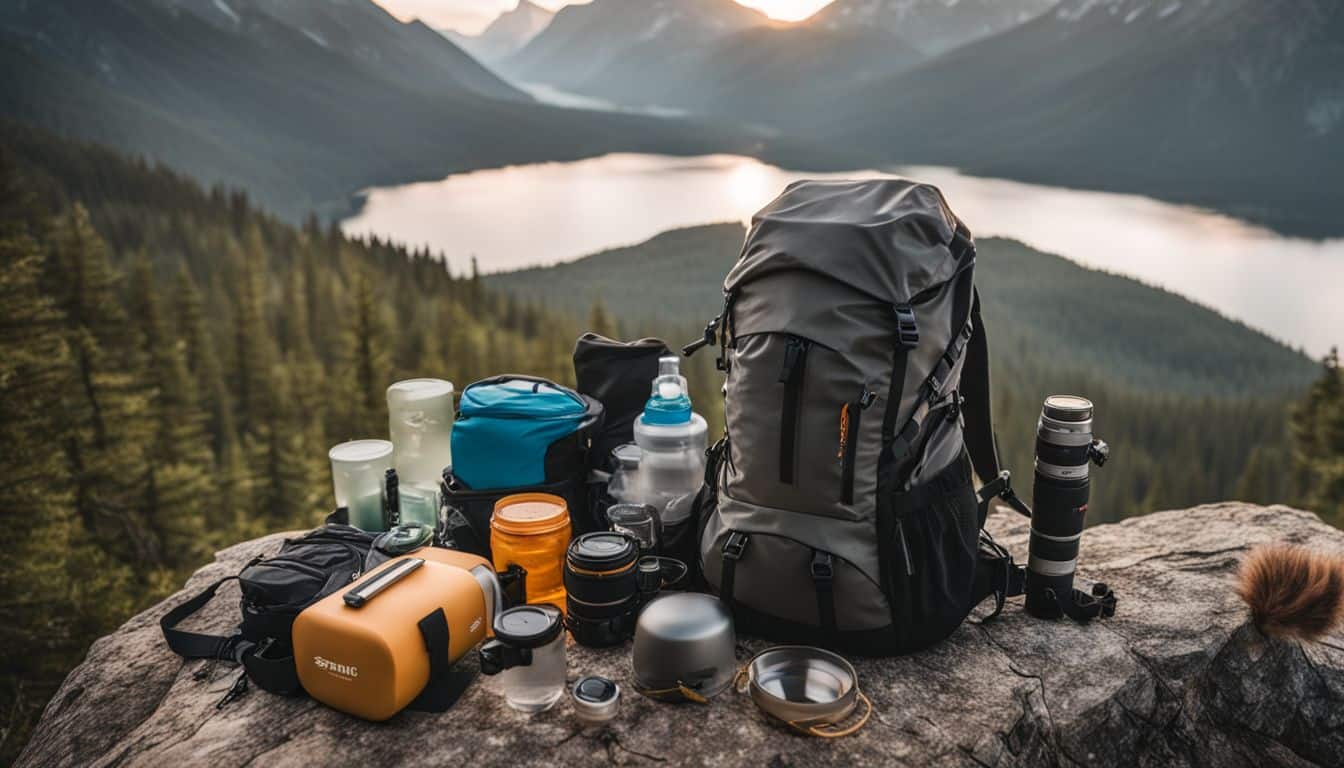
Don’t carry more water than needed
Carrying extra water adds unnecessary weight to your backpack, so it’s important to minimize how much you carry. Instead of carrying one large water container, consider using multiple smaller ones.
This not only reduces the weight but also gives you more flexibility in managing your water supply. Be smart about the amount of food and water you pack, taking into account factors like distance between water sources and availability along the trail.
By packing only what is necessary, you can streamline your pack weight and make your hiking experience more enjoyable.
Guide to Mastering Lightweight Backpacking Strategies
Mastering lightweight backpacking strategies is essential for hikers looking to reduce their pack weight without sacrificing comfort or safety. Here are a few tips to help you become an expert in ultralight hiking:.
1. Prioritize gear that minimizes weight: When choosing your backpack, shelter, sleeping bag, and other essential items, opt for lightweight and compact options made from smart materials.
This will significantly reduce the overall weight of your pack.
2. Pack efficiently: Make sure to organize your gear properly inside your backpack. Utilize compression sacks and packing cubes to maximize space and eliminate any unnecessary bulk, allowing you to fit more while keeping the weight down.
3. Multi-purpose items: Consider bringing gear that can serve multiple functions. For example, a trekking pole can also be used as a tent pole or create an improvised shelter if needed.
This way, you save both weight and space in your pack.
4. Cut out non-essentials: Evaluate each item before adding it to your pack; if it’s not crucial for safety or survival on the trail, consider leaving it behind. Remember that ounces add up quickly when every step counts!
5. Learn how to limit “spares”: While having extra batteries or repair tools might seem like a good idea, think twice about carrying them unless absolutely necessary. By trimming down on spares, you’ll save significant weight without sacrificing preparedness.
By following these strategies and making thoughtful choices regarding gear selection and organization methods, you’ll be well on your way towards mastering lightweight backpacking techniques.
Tips for a Comfortable Fit
To achieve a comfortable fit, it’s important to determine the right size for your backpack and then adjust and fasten the hip belt and shoulder straps accordingly.
Determine the right size for you
To find the perfect backpack size, start by measuring your torso length. This measurement will help you choose a backpack that fits well and distributes weight evenly. Look for packs that list a range of torso lengths in inches.
Some packs even have adjustable straps to customize the fit. Next, measure your hip size to ensure a comfortable wear around your waist. Consider factors like trip duration, pack capacity, frame style, and features when choosing the right size for you.
Remember to properly adjust the straps for an ideal fit that keeps your backpack secure on your back.
Fit the hip belt
To ensure a comfortable fit and optimal weight distribution, it’s important to properly fit the hip belt of your backpack. The hip belt should be long enough to effectively transfer weight off your shoulders and onto your hips, where you can better handle it.
Make sure the hip belt sits on top of your hip bones for the best weight transfer. The padding should be positioned half above and half below the crest of your hips to provide maximum comfort.
And remember, never let the hip belt sit directly on top of your hips – this can cause discomfort and pressure points.
Adjust and fasten shoulder straps
To achieve a comfortable fit with your backpack, it’s important to properly adjust and fasten the shoulder straps. Before doing so, tighten the hipbelt at hip level just above the glutes.
Some backpacks also have load lifters at the base of the waist that can help further adjust the fit. After tightening the hipbelt, loosen the shoulder straps to allow the weight to be supported on your hips.
Once you’ve done that, slowly tighten the shoulder straps while ensuring that they are at the proper height for your backpack. This will help distribute weight evenly and make your hiking experience more comfortable.
Benefits of Ultralight Backpacking
Ultralight backpacking offers increased comfort, greater efficiency, and overall greater enjoyment on the trail.
Increased comfort
When it comes to backpacking, increased comfort is a major benefit of going ultralight. By reducing the weight of your pack, you can minimize strain on your body and enjoy a more relaxed and fatigue-free experience.
Lighter gear means less stress on your back, shoulders, and joints, allowing for easier movement and improved mobility on the trail. With streamlined equipment, you can navigate through challenging terrains with ease.
Plus, by optimizing your preparation and packing tactics, you’ll ensure that everything you bring serves a purpose and enhances your overall comfort during the trip. So if you’re looking for a more enjoyable hiking experience, consider embracing lightweight backpacking strategies.
Greater efficiency
Ultralight backpacking offers greater efficiency when it comes to energy expenditure and overall comfort. By minimizing pack weight, you can move faster and farther with less effort.
This increased agility allows for easier navigation of difficult terrain and crossing rivers. With a lighter load on your back, hiking becomes more enjoyable and efficient. You’ll conserve energy, making your trips more sustainable and allowing you to cover more ground.
So if you want to experience the benefits of greater efficiency in your backpacking adventures, consider incorporating lightweight strategies into your trips.
Greater enjoyment
When it comes to lightweight backpacking, one of the biggest benefits is the greater enjoyment you can experience on your hiking adventures. With a lighter pack, you’ll have increased mobility and energy levels, allowing you to explore side trails and cover more distance each day.
This means you can access more of the backcountry and enjoy all that nature has to offer. Plus, with less weight on your shoulders, you’ll feel more comfortable during your hikes, resulting in a safer and more enjoyable overall experience.
So get ready to enhance your hiking experiences with the benefits of ultralight backpacking!
Potential Drawbacks of Ultralight Backpacking
While ultralight backpacking offers many benefits, it’s important to consider the potential drawbacks before diving in. From decreased durability and safety to higher costs, understanding these factors will help you make informed decisions on your next adventure.
Read more about the potential downsides of ultralight backpacking and how to overcome them for a successful journey.
Less durability and safety
Ultralight backpacking gear is designed to be lightweight, but it may not be as durable or safe as heavier gear. The lighter the gear, the more prone it is to wear and tear. Materials like Dyneema, commonly used in ultralight gear, are less durable compared to other options.
While durability may not be a major concern for trail runners who prioritize weight and breathability, it’s important for hikers to consider the potential trade-offs in terms of safety and durability when opting for lightweight backpacking strategies.
Higher costs
Ultralight backpacking gear can be more expensive compared to traditional gear. In fact, extremely lightweight gear can cost about twice as much as heavier alternatives. The price of ultralight backpacking gear varies depending on the brand and quality you choose.
For example, the Big Agnes Fly tent is a lightweight option that may cost more than heavier alternatives. Remember that the overall cost of backpacking depends on factors like your budget, objectives, and gear choices.
It’s important to consider these higher costs when planning your lightweight backpacking journey.
How to Achieve Ultralight Mastery
Achieving ultralight mastery requires focus, making healthy choices, planning meals, and constantly learning. Ready to become a lightweight backpacking expert? Read on for all the tips and tricks you need!
Stay focused
Staying focused is crucial for achieving mastery in ultralight backpacking. By concentrating on reducing weight, you can instantly drop 5-10 pounds off your backpack’s load. Use lightweight gear and follow expert tips to make this happen.
Stay focused on learning from the experts by taking online courses or reading articles about ultralight backpacking. The more you learn, the better equipped you’ll be to reduce weight and achieve mastery in this area.
So, keep your focus sharp and explore ways to lighten your load!
Make health choices
When it comes to mastering ultralight backpacking, one important aspect is making health choices. By taking care of your body and prioritizing your well-being, you can have a safer and more enjoyable hiking experience.
This includes staying hydrated, eating nutritious meals, and getting enough rest. Making health-conscious decisions will help prevent injuries and reduce fatigue, allowing you to hike longer distances with ease.
So remember to listen to your body and make choices that promote good health while on the trail.
Plan meals
When it comes to lightweight backpacking, planning your meals is crucial. You want to make sure you have enough food to fuel your adventures while keeping your pack weight low. Start by considering your taste preferences and nutritional needs.
Think about including a balance of carbohydrates, proteins, and fats in your meals for sustained energy. Aim for around 480g of carbohydrates per day (about 39% of total calories) and include around 50g of fiber for good digestion.
Creating a meal plan can help ensure you’re getting the right nutrients without carrying unnecessary weight. To give you an idea, here’s a sample 7-day meal plan: [insert example meal plan].
Keep learning
Continuous learning is vital if you want to become an expert in ultralight backpacking strategies. As a hiking enthusiast, it’s important to stay updated and learn new techniques from experienced backpackers.
By continuously educating yourself about efficient backpacking strategies and developing your outdoor skills, you can enhance your camping abilities and become more comfortable on the trail.
Former Backpacker magazine Northwest Editor Michael Lanza suggests that learning from mistakes and gaining valuable outdoor knowledge through ongoing education will lead to continuous improvement in hiking.
Additional Items to Pack
Don’t forget to pack essential items such as sunscreen, bug spray, a first aid kit, a compass, and a GPS device for your lightweight backpacking adventure.
Sunscreen/Bug Spray
When camping or hiking in warm weather, it’s crucial to protect your skin from harmful UV rays and annoying insect bites. That’s why packing sunscreen and bug spray is essential. Instead of using a spray-on sunscreen, it’s more effective to use separate products for sun protection and insect repellent.
Spray-on sunscreens can be messy and may not provide sufficient coverage. By using lightweight sunscreen strategies, you can minimize UV damage to your skin while enjoying the outdoors.
Research has shown that sunscreen is safe and effective for hiking and backpacking adventures. So don’t forget to pack these important items for a comfortable and protected outdoor experience!
First Aid Kit
When venturing out on a hiking trip, it is crucial to have a well-stocked first aid kit. You never know when accidents or injuries might occur, and having the right medical supplies can make all the difference.
Some essential items to include in your lightweight backpacking first aid kit are antiseptic wipes, antibacterial ointment, assorted bandages, gauze pads, medical tape, and moleskin.
These items will help you clean wounds, protect blisters and cuts, and provide necessary support for any injuries that may happen along the trail. Don’t forget to pack latex-free gloves, fine-tipped tweezers (for removing splinters or ticks), a set of safety pins (which can come in handy for various purposes), allergy relief medication (in case of allergic reactions), and antidiarrheal treatment.
Compass
A compass is an important item to consider when going lightweight backpacking. It helps with navigation and finding your way in the wilderness. When packing for your trip, make sure to include a compass as part of your essential gear.
By having a compass, you can confidently explore new trails and enjoy the great outdoors without worrying about getting lost. So remember, don’t forget to pack a compass for your next hiking adventure!
GPS Device
When it comes to lightweight backpacking, having a GPS device is really important. It helps you navigate and know exactly where you are at all times. This can be especially useful when exploring unfamiliar or remote areas.
You can bring along a map and compass too, but a GPS device provides precise location tracking, making it easier to stay on the right path and avoid getting lost. I recommend bringing your phone as a GPS device since most smartphones have this capability.
Just make sure to download offline maps in case you don’t have cell reception while hiking. And remember, having a map, compass, and GPS device together ensures that you’re well-prepared for any navigation challenges during your backpacking adventure.
Conclusion on Lightweight Backpacking Strategies
Mastering lightweight backpacking strategies is essential for hikers looking to reduce the weight of their pack and enhance their overall outdoor experience. By efficiently packing items, making alterations when necessary, and cutting out non-essentials, hikers can shed unnecessary weight and increase both comfort and efficiency on the trail.
With careful planning, smart material choices, and a focus on learning and organization, anyone can achieve mastery in ultralight backpacking. So start implementing these top tips today and enjoy a lighter, more enjoyable backpacking journey.
FAQs on Lightweight Backpacking Strategies
1. What are lightweight backpacking strategies?
Lightweight backpacking strategies are techniques and approaches that help reduce the weight of your backpack, making it easier to carry and allowing you to cover more distance with less effort.
2. How do I choose the right gear for lightweight backpacking?
To choose the right gear for lightweight backpacking, look for items that are specifically designed to be light and compact. Consider factors such as weight, size, durability, and functionality when selecting your gear.
3. What are the top tips for mastering lightweight backpacking?
The top tips for mastering lightweight backpacking include packing only essential items, eliminating unnecessary redundancies in your gear, and learning efficient packing techniques like rolling or compressing clothes.
4. Can anyone practice lightweight backpacking or is it only for experienced hikers?
Anyone can practice lightweight backpacking! While some experience in hiking can be helpful, beginners can also start incorporating lightweight strategies into their trips by gradually reducing pack weight and adjusting their approach.
5. Will using lightweight strategies compromise my safety during outdoor adventures?
No, using effective lightweight strategies will not compromise your safety during outdoor adventures. It is important to ensure that you still bring necessary safety equipment like first aid supplies, navigation tools (map/compass), adequate food/water supplies depending on the duration of your trip, appropriate clothing layers for weather conditions etc., even with a lighter pack configuration. These considerations go hand-in-hand when planning any wilderness adventure despite minimizing pack weight through proper preparations.

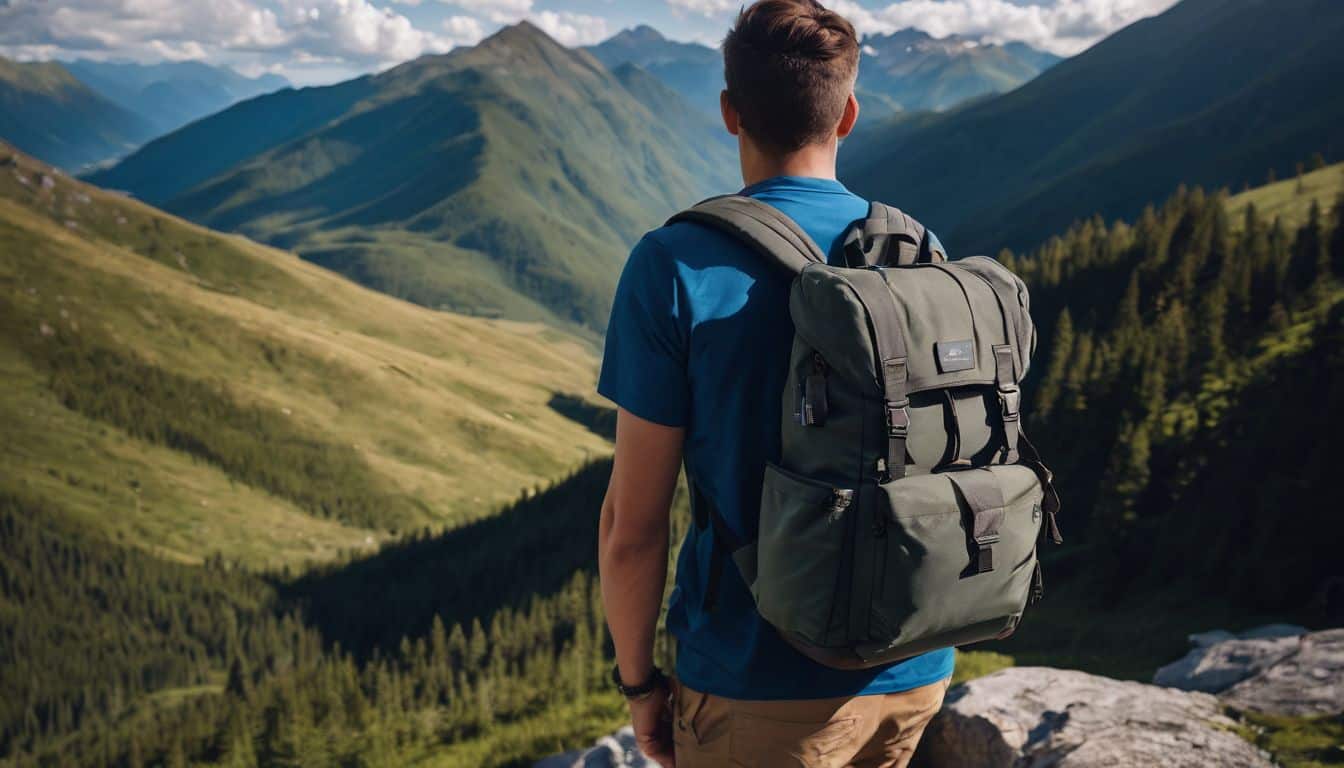
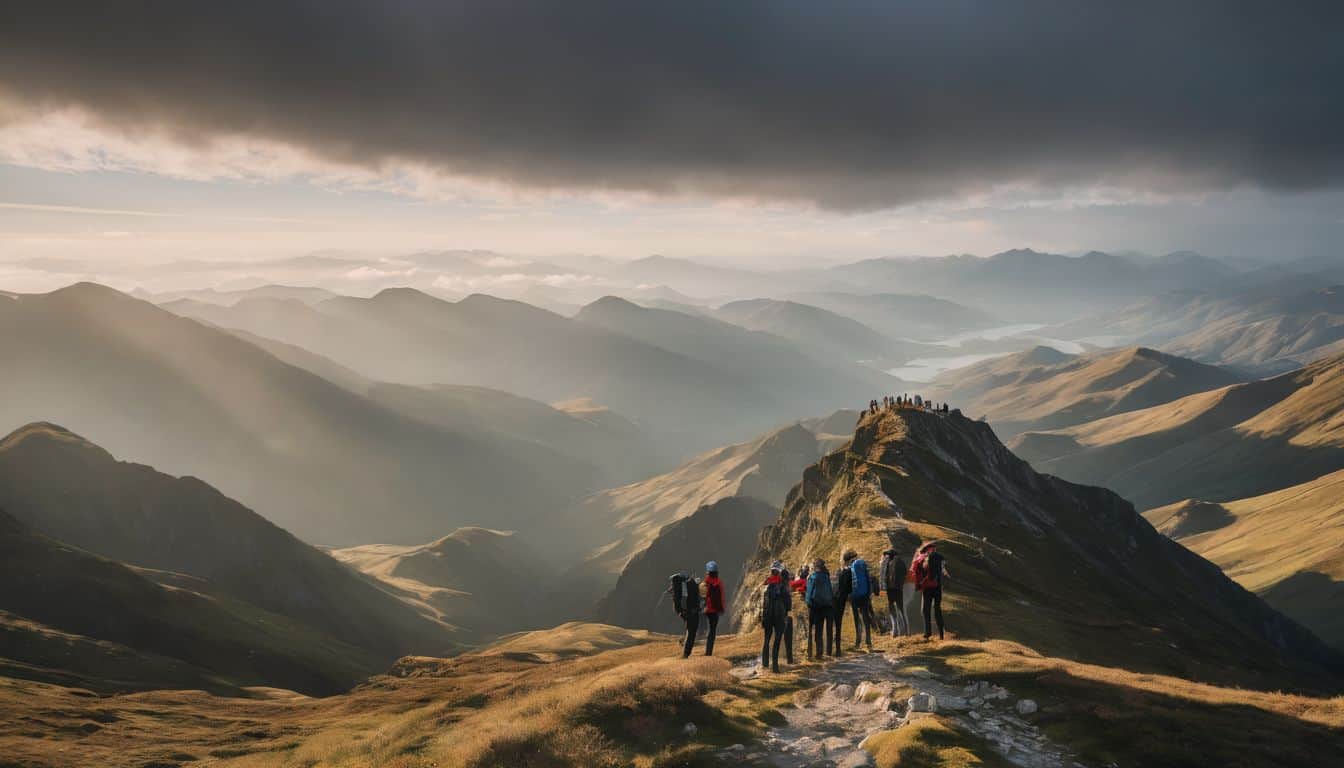
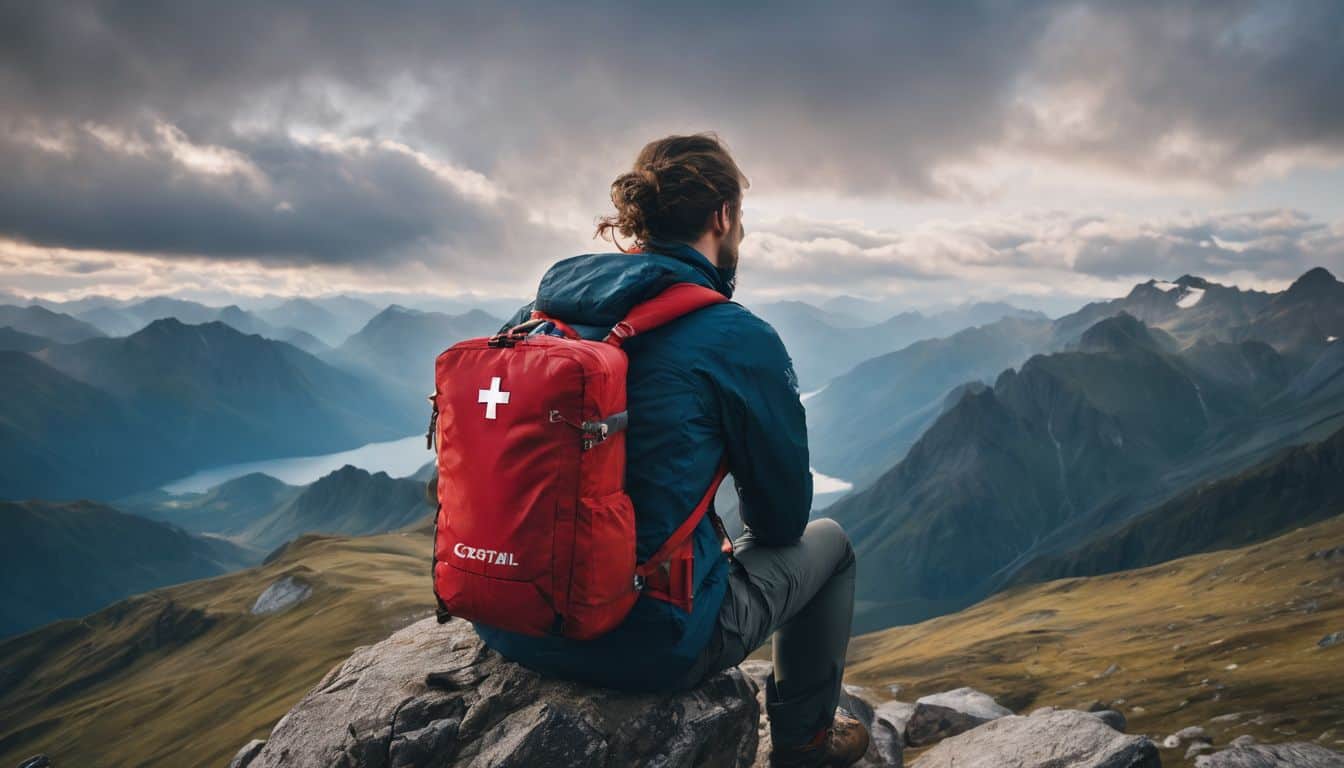
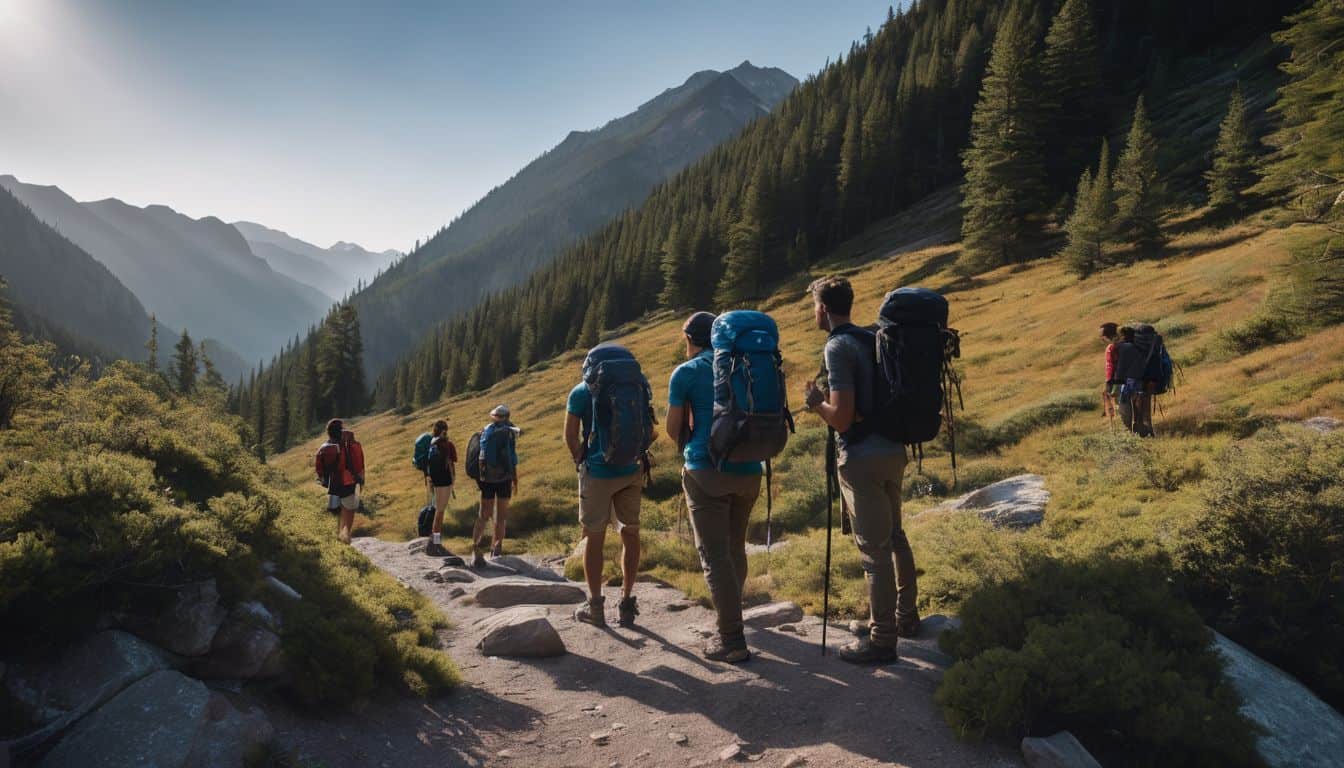
Leave a Reply